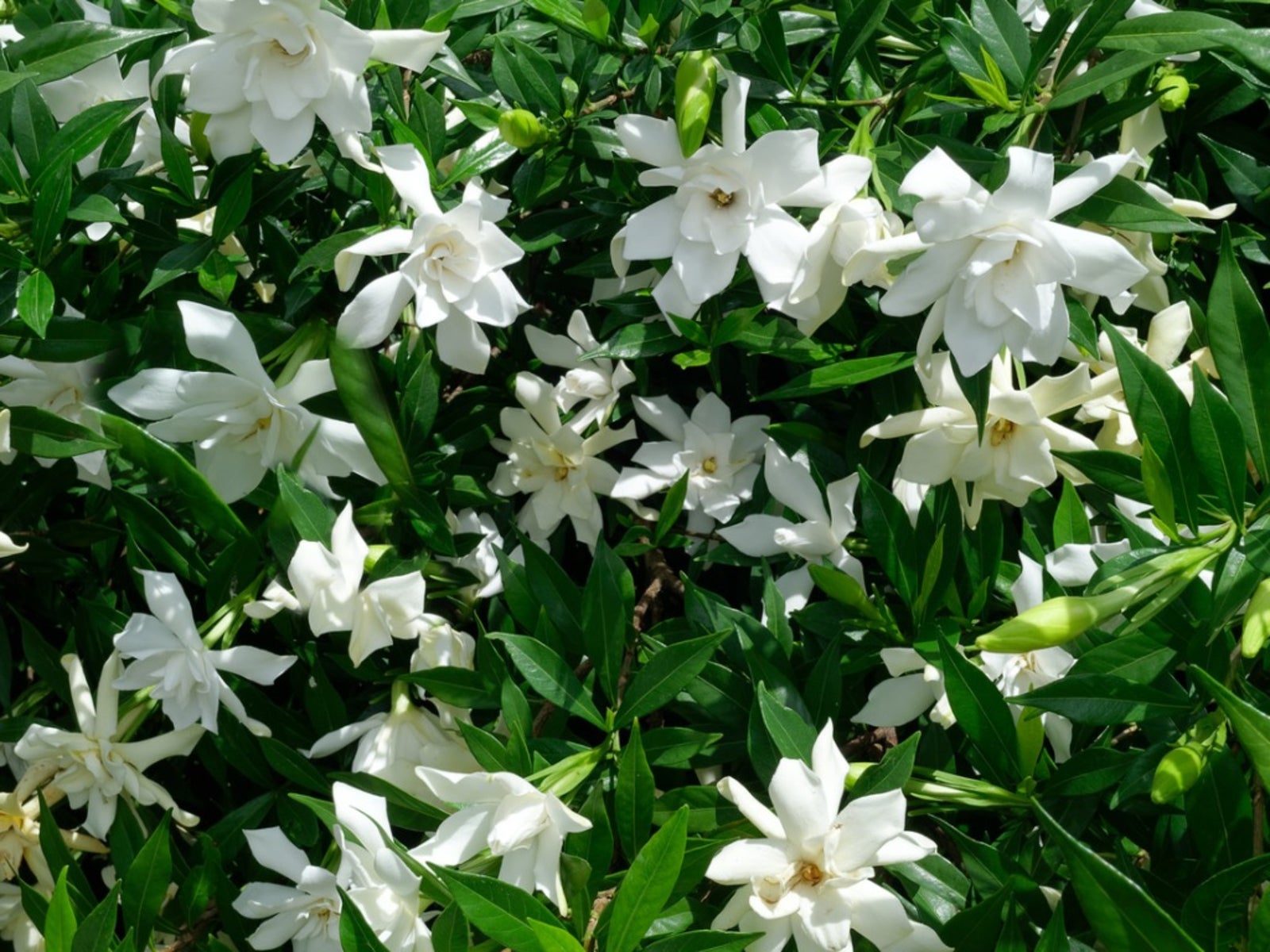Gardenia Flower Bud Problems: Treat Brown Spots On Gardenias


Gardenias are finicky shrubs that don't perform well unless you meet all of their needs. This article discusses problems that cause brown spots on gardenia buds and flowers, and how to correct them. Read on to fix gardenia flowers with brown spots.
Spots on My Gardenia Buds
First, let's look at three stress factors that cause problems with gardenia flowers. Brown spots may be caused by warm night temperatures, too little sunlight, or too little water. Pests can also be to blame. Temperature - When night temperatures are above 60 degrees F. (15 C.), flowers and buds may drop off or brown. This temporary condition improves when night temperatures cool. Buildings and pavement retain heat and keep the surrounding air warm at night, so plant gardenias in the open areas and away from structures. Light - Gardenias grow well in sun or partial shade. Too much shade causes poor flowering and flowers that brown and drop off prematurely. Shade also encourages fungal infection. Before planting, consider the amount of sunlight the shrub will get in spring and summer when surrounding trees and shrubs are in full leaf. Also, think about the growth patterns of surrounding plants, and whether they will create a shade problem in years to come. Water - Allowing the soil to dry out causes brown spots on gardenia flowers and buds that drop off before they bloom, so keep the soil around the shrub moist at all times. Water the plants regularly but keep the leaves and flowers dry by applying the water directly to the mulch that surrounds the plant. Drip irrigation and soaker hoses are excellent choices for watering gardenias. Water droplets that remain on the plant can also make gardenia flowers turn brown or develop spots. Pests - Mites are a common source of gardenia flower bud problems. Bud mites cause the tips of the buds to turn brown, and the buds fall off before they bloom. You can get rid of bud mites with an insecticide that contains carbaryl, such as Sevin. If you prefer a natural approach to pest control, simply remove all of the buds and keep them picked off for a couple of weeks. Without a food source, the mites will move on.
Gardening tips, videos, info and more delivered right to your inbox!
Sign up for the Gardening Know How newsletter today and receive a free copy of our e-book "How to Grow Delicious Tomatoes".

Jackie Carroll has written over 500 articles for Gardening Know How on a wide range of topics.
-
 Looking For Plants To Give You The Soft And Fuzzies? Try These 5 Fuzzy Leaf Plant Options
Looking For Plants To Give You The Soft And Fuzzies? Try These 5 Fuzzy Leaf Plant OptionsLovers of texture, drama, silver foliage and tactile plants will adore these special sensory garden additions. These fuzzy leaf plant options will leave you all aglow
By Susan Albert
-
 Get Ready For A Summer Of Hummers! Grow These Full Sun Hummingbird Plants and Flowers
Get Ready For A Summer Of Hummers! Grow These Full Sun Hummingbird Plants and FlowersIf you’re lucky enough to enjoy a sunny backyard, make sure you are maxing out on your pollinator opportunities and grow these full sun hummingbird plants and flowers
By Tonya Barnett